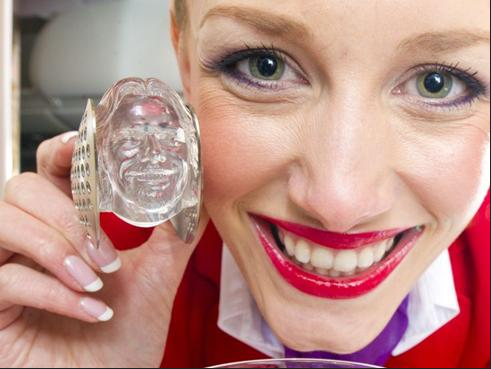Not that making ice cubes in the shape of your own head isn’t world-saving work, but I think it’s a good sign for the rate of 3D data capture adoption when the technology starts to be put to more, shall we say, frivolous pursuits.
Today I came across this article about Virgin Atlantic’s latest promotion: ice cubes quite literally in the shape of founder Richard Branson’s head. How did they do it?
Four designers spent six weeks creating the mold for the ice cubes, using the measurements of Branson’s head, detailed photographic techniques and laser scanning technology.
Didn’t anyone tell those guys about 123DCatch? In terms of ROI, it might be hard to make a case for spending the salaries of four designers for six weeks, just to create custom ice-cube molds. Really, exactly how many first-class tickets will such a promotion sell? Maybe the press in USA Today alone is worth it, though, considering a page of advertising there is probably upwards of $100k.
Regardless, when laser scanning moves from the realms of high-end reverse-engineering and petrochemical problem solving into marketing stunts, things are definitely going in the right direction. Scanners and photogrammetry are getting into designers’ toolboxes and that’s going to expand the market significantly, which will lead to less expensive equipment, which will lead to further expansion.
Sure, high-end scanners with high-end resolution and accuracy will stay expensive for the foreseeable future, but it will be interesting to see the middle and low-end market start to grow and open up and how people graduate from one level up to the next.






